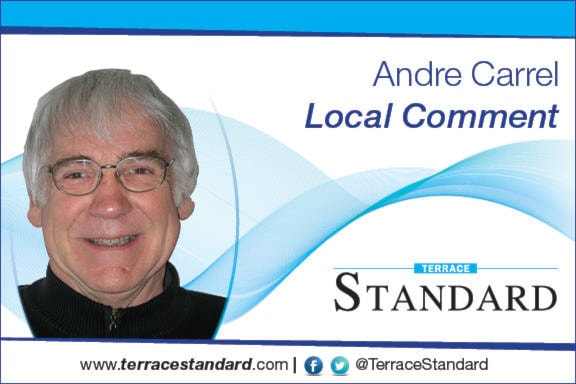The Ministry of Transportation and Infrastructure introduced a new concept with its proposal to replace the 4-way stop at the Highway 16/37 intersection in 2019 with a roundabout.
The display demonstrated roundabout traffic flows and compared their better safety record to that of intersections controlled by traffic lights.
The project is justified by the Ministry’s expectation that traffic volumes will increase at a steady rate for the foreseeable future. The nearby weigh scales are to be relocated next year, eliminating an existing impediment. The cost of installing traffic lights to current intersection design standards would be comparable to the cost of a roundabout. Having a superior safety record, the Ministry’s decision for a roundabout project makes sense.
I am not critical of the idea of a roundabout, nor am I critical of the Ministry’s presentation; quite to the contrary, it was good and informative. I direct my criticism at the conventional way governments plan community-level infrastructure projects.
Traffic flow, not safety, is the issue at this 4-way stop. Traffic flow is another way to describe the time it takes to travel from A to B. How much time will a roundabout save during peak periods on trips from Thornhill to the airport or from the airport to Terrace? At best a minute or two; off peak the saving will be negligible.
If traffic flow and safety were truly decisive factors in setting a project’s priority, surely a pedestrian overpass linking the community’s north and south sections in Terrace would top the list. Pedestrian infrastructure linking these two areas of town is abysmal. The people who lost their lives on the track should not have to trespass on CN property. But that is not the point as illegal acts are at the root of most accidents: sailing through stop signs, ignoring crosswalks, stepping on the gas rather than the brakes on yellow lights, and yes, trespassing on CN property, all because people are in a hurry to get from A to B.
The dilemma with federal and provincial infrastructure planning is that their departments and agencies are organized vertically. Community priorities are ubiquitous, and there is little coordination between the local and upper tier levels of government. To further exacerbate the problem, we see little if any coordination between and within federal and provincial governments, their many departments and agencies.
How about adopting a two-step infrastructure planning process to adjust federal and provincial infrastructure spending to local priorities? That could yield enormous benefits for communities! A local infrastructure planning committee with municipal, regional, and First Nations representation could be established for that purpose. Under such a regime I can imagine that a new hospital would be priority #1, and if not under construction already, a new hospital would now surely be at the final project approval stage. Other infrastructure projects such as the airport terminal, the Sande overpass, the roundabout, truck scale relocation, and yes, a pedestrian overpass, have to wait a few years to realize the community’s top priority.
Federal and provincial agencies would still have to look after their areas of responsibility. However, instead of allocating their funds to their project on their timeline, these funds would be transferred on loan to the agency responsible for the community’s top priority, to be returned by that agency to the lender in due course.
The idea of governments adjusting their departmental infrastructure projects to allow for community priorities may be a radical one, but it recognizes a basic democratic principle. An arrangement of this kind may at first appear to be complicated, but intergovernmental transfers, arrangements, and agreements can be far more complicated than what this idea calls for. Adopting a local priority principle for the allocation of public resources would inject a welcome measure of gravitas and cooperation to local politics.
